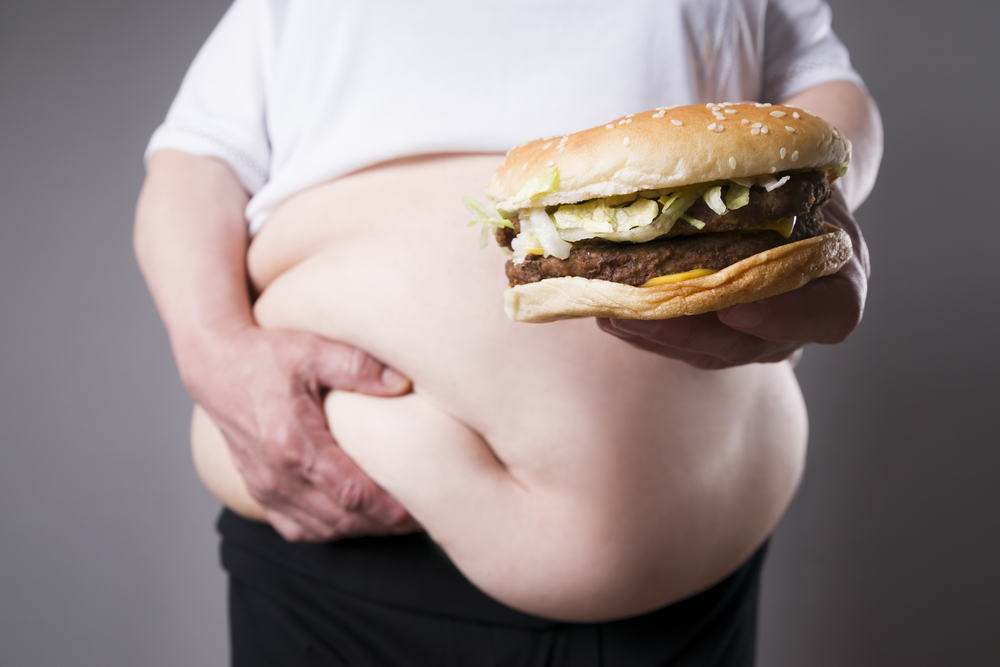Contents:
- Medical Video: Muscle Loss and Aging
- Obesity sarcopenia is a cycle
- Complications due to sarcopenia obesity
- How can obesity trigger loss of muscle mass?
- What needs to be done to overcome obesity sarcopenia
Medical Video: Muscle Loss and Aging
Sarcopenia is a phenomenon of loss of muscle mass and strength with age, and this is part of the aging process. Although sarcopenia occurs on its own, but the condition of obesity can worsen the condition of sarcopenia and cause premature death due to cardiovascular disease.
Obesity sarcopenia is a cycle
Obesity sarcopenia itself is defined as the condition of sarcopenia and obesity in a person. But more specifically this happens when a person experiences a decrease in muscle mass and an increase in fat tissue in the body. Obesity sarcopenia is diagnosed with a person's low mass and muscle strength when he is obese, based on body mass index and abdominal circumference.
The developmental cycle of obesity sarcopenia begins when the aging process occurs, which causes lifestyle changes and results in a decrease in muscle mass, while increasing the body fat layer. These conditions can lead to obesity, which limits physical activity which ultimately results in a decrease in muscle tone. Furthermore, a decrease in muscle mass or a condition of sarcopenia will also reduce physical activity and worsen the condition of obesity.
Complications due to sarcopenia obesity
Decrease in muscle mass and strength causes difficulty in moving, moreover the condition of obesity can cause a person to fall easily and experience a broken bone. Having obesity or obesity in adulthood also worsens the health of the heart and blood vessels, and increases the risk of developing diabetes mellitus when the elderly. These complications not only can reduce the quality of health, but also limit the elderly to physical activity so that it will worsen the condition of obesity sarcopenia and increase the risk of premature death.
How can obesity trigger loss of muscle mass?
Sarcopenia generally occurs in the elderly, but there are several mechanisms of excess fat that can reduce muscle mass and accelerate the process of sarcopenia:
- Changes in body composition during adulthood. Entering the age of 30 years there is usually a decrease in muscle mass due to hormonal changes and physical activity, but this can also be worsened by the increase in fat layer. The imbalance of the proportion of fat with muscle can cause a decrease in muscle strength, while excess fat from a young and adult age causes the brain to have difficulty maintaining muscle mass until old age.
- The presence of inflammation triggered by a layer of fat. The body fat layer is an active tissue that produces protein, one of them pro-inflammatory cytokines, which has a negative effect on maintaining muscle mass and increasing fat tissue more. The protein is likely to be the main trigger in the cycle of sarcopenia obesity.
- Triggers insulin resistance. Proteins produced from fat tissue can interfere with the work of insulin to cause a resistance effect. The condition of insulin resistance will further effect catabolism or decomposition in the muscles resulting in a decrease in muscle mass and strength.
- Inhibits testosterone. One function of the hormone testosterone is maintaining and helping muscle growth. But usually testosterone levels will decrease in people who are obese due to too many fatty acids produced by fat tissue.
What needs to be done to overcome obesity sarcopenia
Both obesity and sarcopenia are very likely to occur with age, but both still need to be prevented before causing complications. The following are some of the efforts that have been focused on overcoming sarcopenia obesity.
- Lose weight - is the main effort to overcome the problems of sarcopenia and obesity, and is needed to prevent complications, reducing weight by only 20% can help reduce the burden of the bone to hold fat and reduce insulin resistance
- Physical activity - the development of obesity sarcopenia is strongly influenced by the level of physical activity because active movement can strengthen muscles and prevent obesity. Adults need physical activity that can maintain muscle mass, such as endurance training and burning fat effectively with aerobic exercise.
- Improved diet - The aging process is often followed by loss of muscle mass and changes in diet, so that the body lacks essential amino acids from protein. So it needs an increase in protein intake to replace various damaged cells, equivalent to 25-30 grams of protein every meal time in a day. In addition, a low carbohydrate diet is also needed especially in the elderly because it can cause negative effects on protein absorption.
READ ALSO:
- Why the distended stomach is more dangerous than ordinary obesity
- Can It Really Be A Fat Body But Stay Healthy?
- 4 Impact of Obesity on Brain Health












